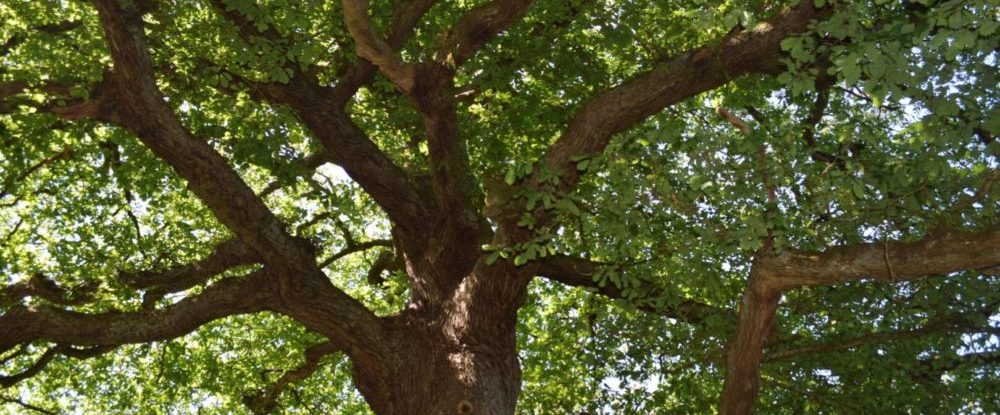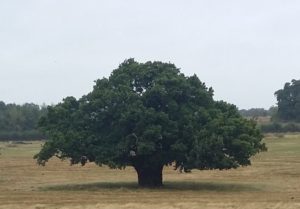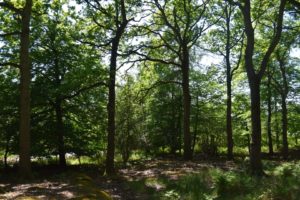Open Grown Trees

We all know that trees are great for biodiversity, but does this always mean that more trees are always better?
What you might not know is that trees grow very differently depending on the situation they grow in. Take an oak seedling – if you grow it in a woodland, it might grow to look something like these trees below. Woodland grown trees grow tall and thin to make sure the crowns reach the canopy so that it can gather sunlight. They don’t tend to have many side branches, especially lower down the trunk, and they don’t tend to live as long as trees that are grown in a more open setting.
Trees grown in the open, or ‘open grown trees’ tend to form a completely different shape, developing full crowns, with a wide and open limb structure, with large limbs growing from further down the main trunk of the tree. This is a direct result of being grown in an open space, not crowded by other trees, and maximises the amount of light they can capture.
The value of these open grown trees to wildlife is astonishing.

Oak trees growing in woodland compared to an oak tree grown in an open environment.
To find one of the most rare and valuable micro-habitats these trees have to offer, you will need to look into the heart of these very old trees, at the dead and decaying wood. Like all living things, trees go through a number of life stages. It is said that an oak tree takes 300 years to grow, 300 years to mature, and 300 years to die. It is in this slow decay and hollowing that you find one of our rarest habitats, home to some of our most endangered species.
Decaying wood such as in the centre of a hollowing tree directly supports over 2000 species in the UK alone. Even this decay goes through several stages, so the longer the tree survives in this decaying condition the more valuable the habitat becomes.
Why do open grown trees have more dead wood and why do they live longer?
In the last phase of life a tree will retrench; no longer able to support the highest branches, it will let them die, forming a new crown lower down. In a woodland this would mean being immediately out-shaded by surrounding trees and would hasten death. However, with the open structure of wood pasture, retrenching trees can still get enough sunlight to survive, extending its life so it can live for many more hundreds of years in this new form.

